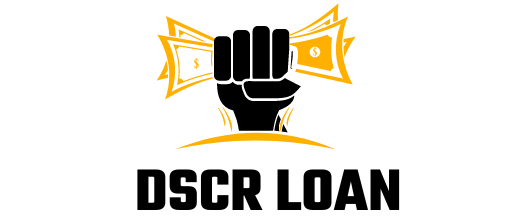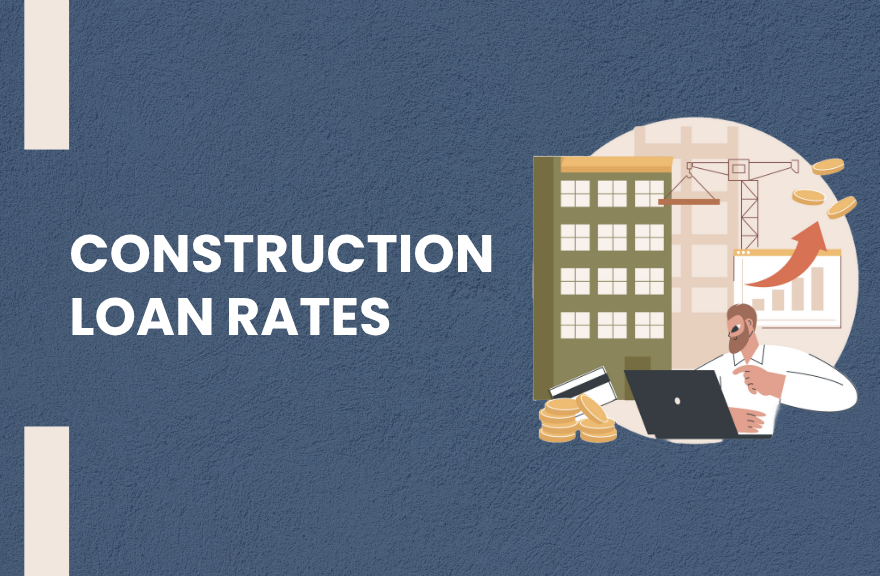Construction loans are specialized financing tools designed to fund the building of residential or commercial properties. Unlike traditional mortgages, these loans cover the unique risks and costs associated with construction projects. If you’re considering building a new home or commercial space, understanding construction loan rates is vital for managing your budget and securing the best financing terms available in 2025.
This article covers everything you need to know about construction loan rates, including how they work, what affects them, how they compare to standard mortgage rates, and practical tips to secure favorable terms. We’ll also provide real-world examples and answer the most common questions so you can confidently navigate construction financing.
What Are Construction Loan Rates?
Construction loan rates are the interest rates charged on loans specifically designed to finance the building of a new property. Unlike traditional mortgages, these loans release funds in stages or draws aligned with the progress of construction, rather than providing the full amount upfront.
Key Characteristics of Construction Loans:
- Short-Term Duration: Usually between 6 and 24 months, covering only the construction period.
- Interest-Only Payments: Borrowers typically pay interest solely on the funds disbursed during construction, not the entire loan amount.
- Higher Interest Rates: Due to the increased risks of delays, cost overruns, or project cancellations, lenders charge higher rates compared to standard home loans.
- Variable or Fixed Rates: Interest rates may vary during construction but often lock in to a fixed rate once the loan converts to a permanent mortgage.
Because construction projects inherently carry more uncertainty, lenders price that risk into construction loan rates, making them generally higher than conventional mortgage rates.
Construction Loan Rates vs Traditional Mortgage Rates
Many people wonder how construction loan rates stack up against regular mortgage rates.
| Feature | Construction Loans | Traditional Mortgages |
|---|---|---|
| Interest Rate | Usually 0.5% to 2% higher than mortgages | Lower, more stable rates |
| Loan Term | Short-term (6-24 months) | Long-term (15-30 years) |
| Payment Structure | Interest-only during construction | Principal + interest monthly |
| Loan Disbursement | Draws based on construction progress | Lump sum at closing |
| Risk Level for Lenders | Higher due to construction uncertainties | Lower risk, finished property |
Why Are Construction Loan Rates Higher?
Construction loans generally come with higher interest rates due to the following reasons:
- Project Uncertainty: Construction projects often face delays, cost overruns, or may not be completed, increasing the lender’s risk.
- Short Loan Duration: These loans typically last 6 to 24 months, so lenders charge more to offset the short repayment period.
- Staggered Funding: Since funds are disbursed in phases based on construction progress, the administrative workload and costs are higher.
- Unfinished Collateral: Lenders have limited security while the property is still under construction, making it a riskier asset.
What Influences Construction Loan Rates?
Interest rates on construction loans depend on several important factors:
1. Credit Score and Overall Financial Health
Lenders favor borrowers with strong credit histories. Generally, a credit score above 700 improves your chances of securing a lower interest rate. Along with your credit score, lenders assess your debt-to-income ratio and income stability to gauge your ability to repay the loan.
2. Loan-to-Value (LTV) Ratio
The LTV ratio compares the loan amount to the projected value of the completed property. A lower LTV means you have more equity invested, which reduces the lender’s risk and can lead to better rates. For construction loans, LTV ratios typically fall between 80% and 90%.
3. Type of Construction Loan
- Construction-to-Permanent Loans: These loans convert into a standard mortgage after construction, often featuring a fixed interest rate post-build, usually resulting in more favorable rates.
- Stand-Alone Construction Loans: Short-term loans used only for the construction phase, requiring separate financing afterward, which often come with higher interest rates due to added risk.
4. Loan Amount and Project Duration
Lenders may charge higher rates for larger loan amounts or longer construction timelines, as extended projects increase the risk of delays or complications.
5. Broader Economic and Market Conditions
Interest rates for construction loans are influenced by the overall economic environment. Factors such as Federal Reserve policies, inflation rates, and general market demand affect mortgage and construction loan rates alike. When mortgage rates rise, construction loan rates typically follow suit.
Types of Construction Loans and Their Rate Differences
Knowing the different types of construction loans can help you understand the typical interest rate variations you might face:
Construction-to-Permanent Loan (Single-Close Loan)
This loan finances the construction phase and automatically converts into a traditional mortgage once your project is complete. During construction, you typically make interest-only payments. Afterward, the loan transitions to a fixed or adjustable-rate mortgage.
- Rates: Generally lower than stand-alone construction loans.
- Advantages: Only one closing cost and the ability to lock in your long-term mortgage rate early.
- Example: You might pay around 6.75% during construction, which converts to a fixed mortgage rate of about 6.5% once the home is finished.
Stand-Alone Construction Loan (Two-Close Loan)
This loan covers just the construction period. Upon completion, you must secure a separate mortgage to repay the loan balance.
- Rates: Usually higher, often at least 1% above regular mortgage rates.
- Advantages: Greater flexibility to shop around for mortgage terms after construction.
- Disadvantages: You’ll face two separate closings and additional fees.
How to Secure the Best Construction Loan Rates
Although construction loans typically carry higher interest rates, there are effective ways to reduce your borrowing costs:
Improve Your Credit Profile
Work on paying down outstanding debts, avoid applying for new credit before your loan application, and ensure your credit report is free from errors to enhance your creditworthiness.
Provide a Comprehensive Construction Plan
Submit detailed and realistic blueprints, budgets, and timelines. Lenders feel more confident funding projects backed by thorough and well-prepared documentation.
Partner with Licensed, Experienced Contractors
Projects managed by reputable, licensed builders are seen as lower risk. Be ready to provide contractor references and proof of insurance to reassure lenders.
Select the Most Suitable Loan Type
Consider construction-to-permanent loans, which often offer more favorable interest rates and reduced fees. Assess your financial needs to determine the best loan structure for your situation.
Compare Multiple Lenders
Shop around with banks, credit unions, and specialized lenders. Don’t forget to inquire about options to lock in your interest rate during the construction phase.
Real-World Case Study: Saving on Construction Loan Rates
John and Lisa planned to build a custom home. Initially, their credit scores hovered around 680, and their lender offered a construction loan at 7.8%. After working with a financial advisor, they improved their credit scores to above 740 within 6 months. This helped them negotiate a better rate of 6.9%, saving over $10,000 in interest during their 12-month construction period.
They also chose a construction-to-permanent loan, which reduced closing costs and gave them a fixed mortgage rate upon project completion.
Common Terms Related to Construction Loan Rates
| Term | Definition |
|---|---|
| Draw Schedule | The timeline and process for releasing loan funds as construction milestones are met. |
| Interest Reserve | Funds set aside to cover interest payments during construction. |
| Loan Disbursement | The actual release of loan funds to pay builders or suppliers. |
| Conversion Rate | The mortgage interest rate applied after the construction phase. |
| Underwriting | The lender’s process of evaluating your loan application and risk. |
What Affects Construction Loan Rates?
Several factors determine your construction loan rate in 2025:
- Credit Score: Higher scores typically get better rates.
- Loan Term: Shorter loans may have lower interest rates.
- Project Scope: Larger or riskier projects may attract higher rates.
- Down Payment: More equity upfront lowers lender risk.
- Lender Type: Banks vs. private lenders vs. online fintech companies.
- Market Conditions: Federal Reserve rates and inflation trends also impact rates.
Tips for Improving Your Approval Chances
- Maintain a strong credit profile
- Work with an experienced contractor
- Submit a well-documented budget and project timeline
- Show prior success with similar developments
- Stay transparent throughout the application process
Conclusion
Navigating construction loan rates can be complex, but understanding the key factors that influence these rates and how they differ from traditional mortgages empowers you to make smarter financing decisions. Whether you choose a construction-to-permanent loan or a stand-alone construction loan, prioritize maintaining a strong credit profile, prepare detailed documentation, and shop around for the best offers.
By taking these steps, you can secure competitive rates, minimize costs, and focus on completing your dream project. For personalized assistance, consider consulting a local digital agency specializing in mortgage and construction financing.
FAQs
What is the typical down payment for a construction loan?
Most lenders require 20–25% down payment for construction loans to reduce their risk.
Can I lock in my construction loan rate?
Some lenders offer a rate lock during construction, but often rates are variable until conversion.
Are construction loan rates fixed or adjustable?
Many construction loans start with variable rates and convert to fixed rates upon mortgage conversion, but terms vary by lender.
How is the interest calculated on a construction loan?
Interest is usually charged only on the amount disbursed, not the total loan amount, during construction.
How long does the construction loan approval process take?
It typically takes 30 to 60 days due to the need for detailed plans and appraisals.

Introducing Emily Parker, a seasoned professional with over 5 years of expertise in DSCR loans. With her extensive knowledge and experience in the field, Varsha has consistently demonstrated a deep understanding of DSCR loan intricacies and a proven track record of delivering successful outcomes for her clients.

